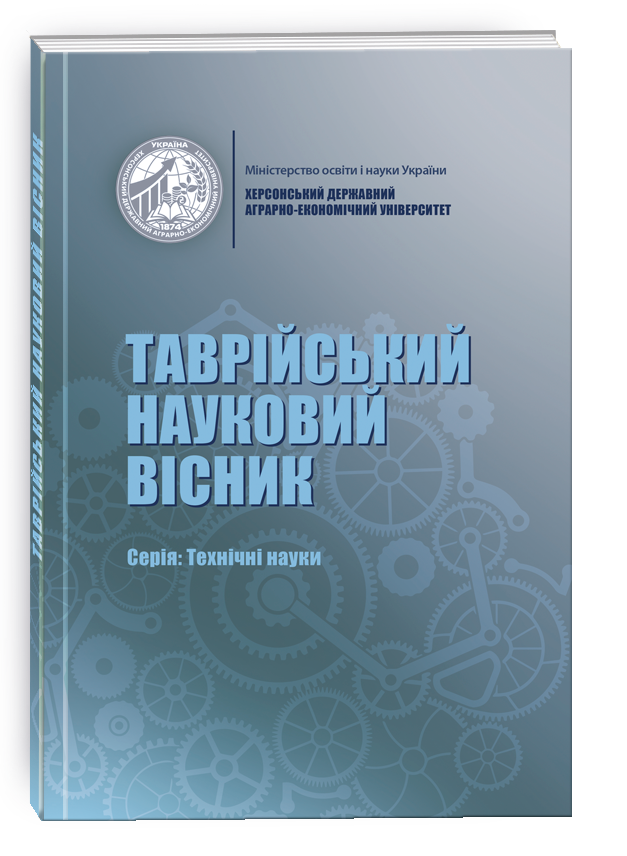ЕКСПЕРТНА ОЦІНКА КУПАЖУ НА ОСНОВІ КУКУРУДЗЯНОЇ І ЛЛЯНОЇ ОЛІЙ
DOI:
https://doi.org/10.32782/tnv-tech.2023.2.23Ключові слова:
кукурудзяна олія, лляна олія, купаж, окиснення, поліненасичені кислотиАнотація
Здоров’я нації – один з головних пріоритетів керівництва кожної цивілізованої держави. Для досягнення цієї мети дуже важливим є забезпечення адекватного харчування населення. Зокрема, важливим фактором є збалансованість жирнокислотного складу жирів та олій, наявність та певне співвідношення вищих жирних кислот, які належать до ессенціальних складових. Жирнокислотний склад є одною з ідентифікаційних ознак при аналізі жирів. Можливим шляхом вирішення проблеми збалансованості складу є створення купажованих олій. Метою роботи було проведення експертної оцінки отриманого зразка купажованої олії, склад якої за співвідношенням поліненасичених кислот є наближеним до ідеального. Для купажу та вихідних олій провели аналіз їхнього жирнокислотного складу. Оцінку стабільності при зберіганні олій проводили за зміною кислотного, йодного та пероксидного чисел. Експериментально доведено, що нерафінована кукурудзяна олія є більш стійкою до дії окисників, ніж рафінована, тому для купажування було обрано нерафіновану кукурудзяну олію. Нами отриманий купаж змішуванням кукурудзяної олії (90 %) і лляної олії (10 %). В його складі співвідношення ПНЖК ω-3/ω-6 дорівнює 1:10, що рекомендоване для здорової людини. Результати контролю пероксидного числа купажу, а також кукурудзяної і лляної олій показало його закономірне збільшення при зберіганні. Проте реально отримані значення пероксидного числа для купажу були дещо нижчими ніж розраховані, виходячи із значень пероксидного числа окремих олій і їхнього вмісту в складі купажу. До того ж зростання пероксидного числа купажу йде значно повільніше в порівнянні зі зразком лляної олії. Тобто наявність кукурудзяної олії в складі зразка гальмує процеси утворення гідропероксидів і пероксидів. Ймовірно, це обумовлено присутністю в складі кукурудзяної олії антиоксидантів – токоферолів.
Посилання
Смоляр В. І. Концепція ідеального жирового харчування. Проблеми харчування. 2006. № 4. С. 14–24.
Смоляр В. І. Сучасні проблеми якості харчових жирів. Проблеми харчування. 2008. № 3–4. С. 5–12.
Хімiя жирів: монографія / Тютюнников Б. Н. та ін. Харків: НТУ «ХПІ», 2002. 452 с.
Харчова хімія: навчальний посібник / Євлаш В. В. та ін. Харків : Світ книг, 2012. 504 с.
Технології продуктів з модифікованим жировим складом: реалії та тенденції: монографія / Савченко О. А. та ін. Київ, 2018. 250 с.
Siri-Tarino P. W, Sun Q, Hu F. B, Krauss R. M. Saturated fat, carbohydrate, and cardiovascular disease. Am J Clin Nutr. 2010. Vol. 91. Р. 502–509. https://doi.org/10.3945 %2Fajcn.2008.26285.
Relation between dietary linolenic acid and coronary artery disease in the National Heart, Lung and Blood Institute Family Heart Study / Djousse L., Pankow J. S., Eckfeldt J. H., et al. Am J Clin Nutr. 2001. Vol. 74. P. 612–619.
Mori T.A., Beilin L.J. Long-cain omega-3 fatty acids, blood lipids and cardiovascular risk reduction. Current Opinion in Lipidology. 2001. Vol. 12. P. 11–17.
Hornstra G. Influence of dietary fat type on arterial thrombosis tendency. J Nutr Health and Ageing. 2001. Vol. 5. P. 160–166.
TLR4 links innate immunity and fatty acid-induced insulin resistance / Shi H., Kokoeva M. V., Inouye K., et al. J Clin Invest. 2006. Vol. 116. P. 3015–3025.
Dzisiak D. New oils reduced saturated and trans fats in processed foods. Cereal Foods World. 2004. Vol. 49. № 6. Р. 331–333.
Baer D. J., Judd J. T., Clevidence B. A., Tracy R. P. Dietary fatty acids affect plasma markers of inflammation in healthy men fed controlled diets: a randomized crossover study. Am J Clin Nutr. 2004. Vol. 79. Р. 969–973.
Muller H., Lindman A. S., Brantsaeter A. L., Pedersen J. I. The serum LDL/HDL cholesterol ratio is influenced more favorably by exchanging saturated with unsaturated fat than by reducing saturated fat in the diet of wome. J Nutr. 2003. Vol. 133. Р. 78–83.
Топчій О. А., Котляр Є. О. Принципи купажування рослинних олій збалансованих за жирнокислотним складом. Східно-європейський журнал передових технологій. 2015, вип. 1/6 T. 73. С. 26–32. DOI: 10.15587/1729-4061.2015.35997.
Радзієвська І. Г., Громова О. М. Сумішеві олії для здорового харчування. Харчова промисловість. 2013. № 14. С. 30–33. URL: http://nbuv.gov.ua/UJRN/Khp_2013_14_9.
Матвєєва Т. В., Федякіна З. П. Купажі олій – джерело поліненасичених жирних кислот. Наукові праці ОНАХТ. Вип. 46. Том 2. Одеса : ОНАХТ, 2014. С. 210–213.
Матвєєва Т. В., Федякіна З. П., Шаповалова І. Є. Купажування олій з оптимізованим жирнокислотним складом. Вісник НТУ «ХПІ». 2013. № 11. С. 116–120.
Демидова А. О. Дослідження зв’язку між кінетикою окиснення та погіршенням сенсорних характеристик рослинних олій. Вісник аграрної науки Причорномор’я. 2021. Вип. 4. С. 89–98. DOI: 10.31521/2313-092X/2021-4(112)-9.
Пешук Л. В., Радзієвська І. Г. Дослідження впливу рослинних олій на стійкість свинячого жиру. Продукти & інгредієнти. 2009. № 1 (54). С. 28–30.







